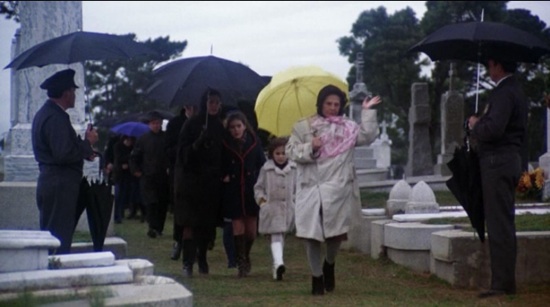Harold and Maude

With a dismissive wave at a funeral-home goon, Ruth Gordon exits a graveside ceremony during the meet-cute scene from Hal Ashby’s cult comedy Harold and Maude.
Her jaunty demeanour and springtime costume — yellow bumbershoot, pink chiffon scarf — express Maude’s carefree Lebensphilosophie. But Ashby’s blocking adds depth to what might otherwise be a glib message: “hopefulness,” say. Together with the monuments in the background, the stiff funeral-home flunkies form a colonnade of reified sentiment through which the other mourners — ritually garbed in black, hunched against emotional weather — pass.
Alone in the crowd, a leader without followers, Maude isn’t merely a signifier of hopefulness. She is a Nietzschean superwoman, a pagan goddess whose very aspect repudiates Judeo-Christian morality. She is wisdom, love, joy.

